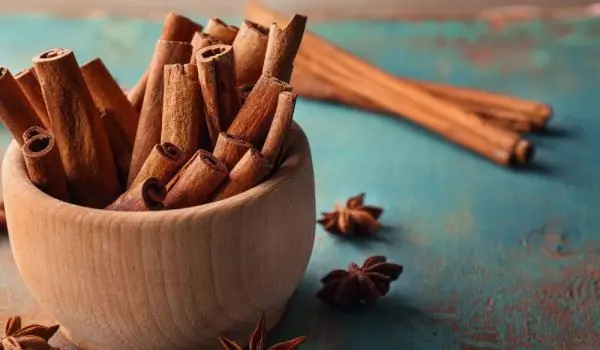2025 Author: Jasmine Walkman | [email protected]. Last modified: 2025-01-23 10:18
Olives were cultivated by man more than 7,000 years ago, and today are almost a mandatory element of every table. They are grown in different parts of the world - some more traditional such as Italy, Spain and Greece, others - more unusual as Switzerland. But no matter where it is grown, the olive has its own characteristics that correspond to the variety.
The easiest way to divide olives is into black and green. Black olives generally have a lighter taste. In most of them you can even smell a fruity and even slightly sweet note. The greens are at the other extreme. More bitter, often much harder.
Their strong taste and aroma come both from the variety itself and from the fact that they are preserved for a longer time. Often green olives are sold pitted, and in its place in olives there are peppers, almonds, garlic cloves, etc. Another difference between black and green olives is the fat content - black olives are more oily than greens.
Of course, when we talk about black olives, strange as it may sound, you must first specify the exact shade of black. If they are pitch black, with the same color saturation on all sides, as well as inside - you certainly bought painted olives.
Even harvested from the same tree, some of them have bright sides, and even some of them are green. Second, even if they are darkened by the enzymatic process, they never become pitch black both inside and out.

Nowadays, the black color is obtained by picking green olives, which are then dyed with iron gluconate, but sometimes treated with caustic soda, and there have been reports of illegal dyeing with textile dye for clothing.
So be extremely careful with the selection of black olives.
Kalamata is the most popular variety black olives. Its name comes from the Greek city of Kalamata, where this variety comes from. Kalamata have a mild taste, they are picked when fully ripe. Canned in vinegar, olive oil or even wine.
Their soft taste makes them suitable for all types of dishes. If you serve them as a side dish, combine them with feta cheese, Chardonnay or Pinot Noir, to which you have added a mix of spices.
Halkidiki are the most popular green olives. You can guess their origin. They are most often canned and stored in brine. In some Halkidiki olives you may feel a slightly spicy note. They are large olives, often with a strong and intrusive taste, most often sold stuffed with almonds.
Recommended:
The Difference Between Long Grain, Short Grain And Medium Grain Rice

The rice is one of the most useful cereals. It is rich in complex carbohydrates (75% - 85%) and protein (5% - 10%), which are the main source of energy for the body. That is why it is so widely used. However, its preparation proves to be a difficult task for many.
What Is The Difference Between Plain Cream, Whipped Cream, Sour Cream And Confectionery Cream?

The cream is one of the most commonly used ingredients in cooking. Everyone uses it to make delicious meals. It is used in the preparation of sauces, creams, various types of meat and of course - pastries. It is often the basis of various creams, cake trays and icings and is a mandatory part of any other sweet temptation.
What Is The Difference Between Cassia Cinnamon And Ceylon Cinnamon?

We all love the aroma of cinnamon , especially at Christmas. There are some kind of cinnamon , but today I will dwell in more detail on two and tell you what it is the difference between Ceylon cinnamon and cassia . Ceylon cinnamon is much more loved, preferred and appreciated than cassia.
The Difference Between Cumin And Cumin

Sometimes similar names mean completely different things and this is especially important for cooking. Although cumin and cumin have the same root and although both are spices and quite fragrant (but in a different way), there is definitely a difference.
The Difference Between Ammonia Soda And Baking Soda

In essence, ammonia soda and baking soda are chemical leavening agents. They act mainly in an acidic environment. The effect of both is similar. This makes them interchangeable. Which type of leavening agent to use is a matter of both taste and the recipe itself.

